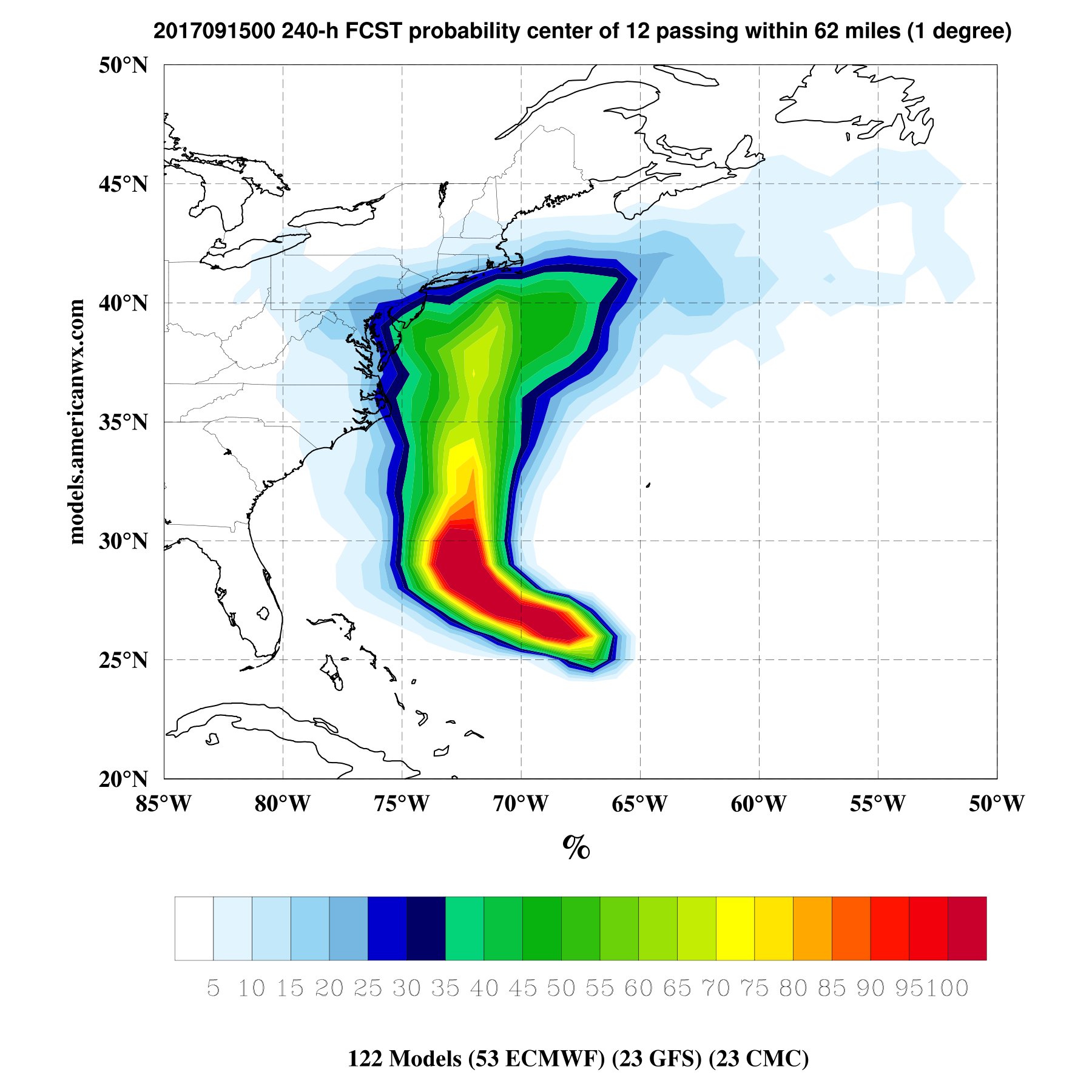When/if Jose hits New England, it's likely to maintain most of its tropical characteristics given the absence of large-scale upper level troughs in the vicinity that usually induces crosswise thermal advection and accelerates asymmetrization of concomitant convection (& therefore diabatic potential vorticity anomalies). Potential Vorticity essentially is the measure of the amount of vorticity a given amount of air would have if it was stretched or contorted down to a reference pressure &/or latitude and it's the combination total vorticity and static stability, areas with large static stability, such as the stratosphere, will have large potential vorticity and vis versa in the troposphere. Potential vorticity is conserved for adiabatic, frictionless flow, which also means non-conservative processes, such as convective overturning and low-level frictional convergence can create or destroy potential vorticity. In the case of tropical cyclones, latent heat release from convection helps generate large amounts of potential vorticity in the low-mid troposphere that initiates non-linear positive feedbacks that amplify pre-existing PV anomalies and augment the ambient low level vortex. This essentially means that the stronger a tropical cyclone becomes, the faster it can grow... These PV anomalies are found below the mean "level of maximum heating", wherein height falls occur below as the thicknesses expand due to diabatic warming and vis versa above this level. In layman terms, as a column of air warms, it expands, and above the point where this column is expanding the most, the heights rise (leading to higher pressure in the upper levels) & below, the heights fall, intensifying the low level vortex. (As an aside: the level of maximum heating is generally determined via the intersection of vertical velocity acceleration (which usually increases up through the mid troposphere) and condensational deposition, thus it's often found somewhere in the mid troposphere (~400-700 hPa)... As a TC intensifies, and the amount of heating in the mid troposphere increases, this low level potential vorticity below the level of maximum heating organizes into a tower and builds upwards. I.e. PV tower becomes taller and stronger as a TC intensifies. The height of the PV tower is often referred to as the "Rossby penetration depth". As its height changes in accordance w/ TC intensity, the layer averaged wind (i.e. steering flow) within the PV tower also changes, which also explains why two TCs of different intensities will travel in different directions given the same set of background conditions...
Graphic credit: Gary Lackmann

Using IDV, I took a Potential Vorticity vertical cross section of the Potential Vorticity across Jose's vortex as he approached southern New England. Considering the aforementioned information, if Jose is still a warm core cyclone, we should expect to see a diabatic PV tower protruding upwards from the surface to the mid levels. That's exactly what we see below as indicated by the positive PV (in red) extending up to 400 hPa and maximizing around 500-600 hPa. In fact, the vertical juxtaposition of +PV is probably the most easily distinguishable characteristic that allows one to easily decipher between a cold core and warm core cyclone. Contrarily, cold-core extratropical cyclones are associated with extrusions of PV that extend from the stratosphere downwards into the troposphere and can even occasionally lead to profound tropopause folding...


TC phase space diagrams which use thickness symmetry and layer averaged thermal wind confirm the PV cross section and indicate Jose is still warm core cyclone as it approaches southern New England

















